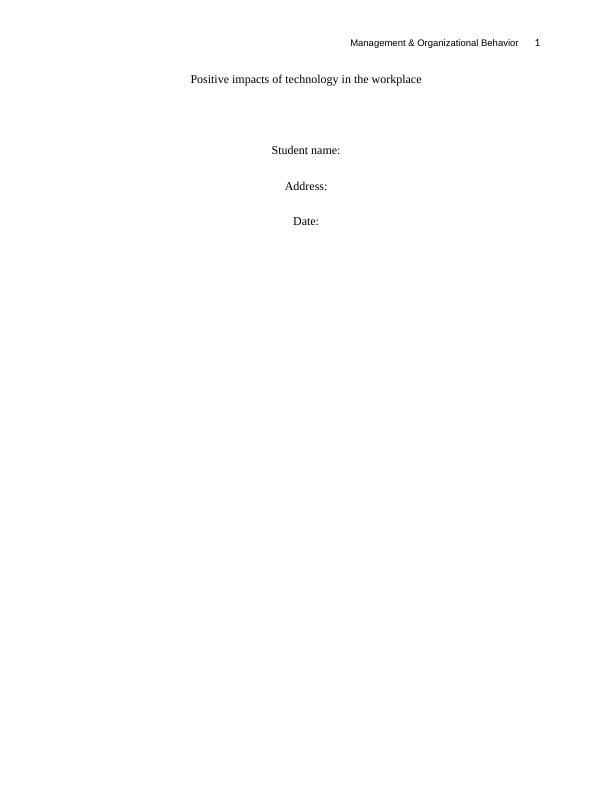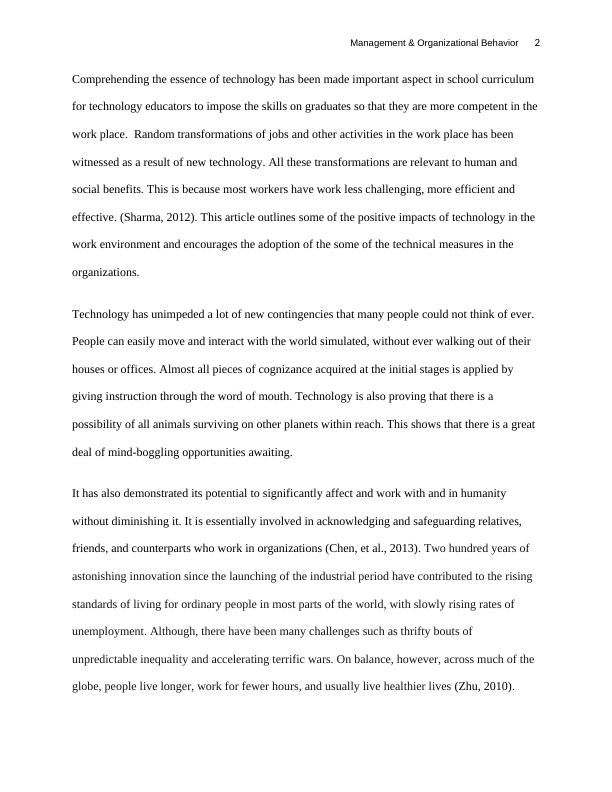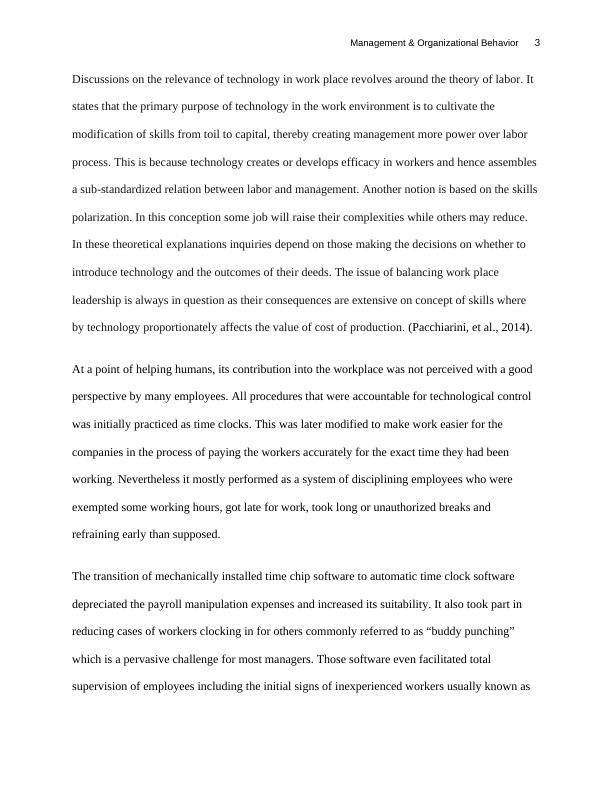Positive Impacts of Technology in the Workplace
10 Pages2611 Words342 Views
Added on 2023-06-12
About This Document
This article outlines some of the positive impacts of technology in the work environment and encourages the adoption of the some of the technical measures in the organizations. It discusses the relevance of technology in the workplace, its impact on labor and skills polarization, and the use of technology for monitoring and supervision. The article also highlights the benefits of social media and AI in the workplace and concludes with the importance of investing in technology for development and growth.
Positive Impacts of Technology in the Workplace
Added on 2023-06-12
ShareRelated Documents
End of preview
Want to access all the pages? Upload your documents or become a member.
Changes in Workplaces Over the Last 50 Years
|12
|3341
|93
Foundation of Management : Assignment
|8
|1889
|67
Organizational Behaviors
|7
|1925
|78
What it Means to be an HR Professional: A Discussion
|4
|602
|41
Transformed Working Time Arrangements: Benefits and Extent of Agreement
|12
|4203
|35
Organizational Behavior Essay Assignment
|7
|1938
|171



